Tabla de Contenido/ Table of Contents
- 1 Miami-Dade and Dreams of Grandeur: Budget for the Old MIA and a New Airport on the Table
- 2 The Budget for the Old MIA: Is It Enough to Solve the Problems?
- 3 A New Airport: An Expensive Dream
- 4 Comparing Land Prices and Priorities
- 5 Key Questions Raised by These Projects
- 6 Transparency:
- 7 Impact of Noncompliance on Public Trust
- 8 Recommendations to Comply with Ordinance No. 19-122
- 9 Transparency as a Priority
- 10 A Questionable Relationship Between Costs and Priorities
- 11 The New Airport: An Expensive Dream
- 12 Impact on Residents: A Dream at the Expense of the Community?
- 13 An Old Airport, a New Airport, and the Cost of Ambition
- 14 Conclusion: Priorities and Transparency
Miami-Dade and Dreams of Grandeur: Budget for the Old MIA and a New Airport on the Table
The Miami International Airport (MIA) has long been the economic engine of the county, but years of neglect have necessitated a historic investment in its renovation. However, instead of focusing on maximizing the effectiveness of this investment, Commissioner Kevin Cabrera and Mayor Daniella Levine Cava have proposed the construction of a new airport—an ambitious project that raises serious questions about the county’s priorities and financial sustainability.
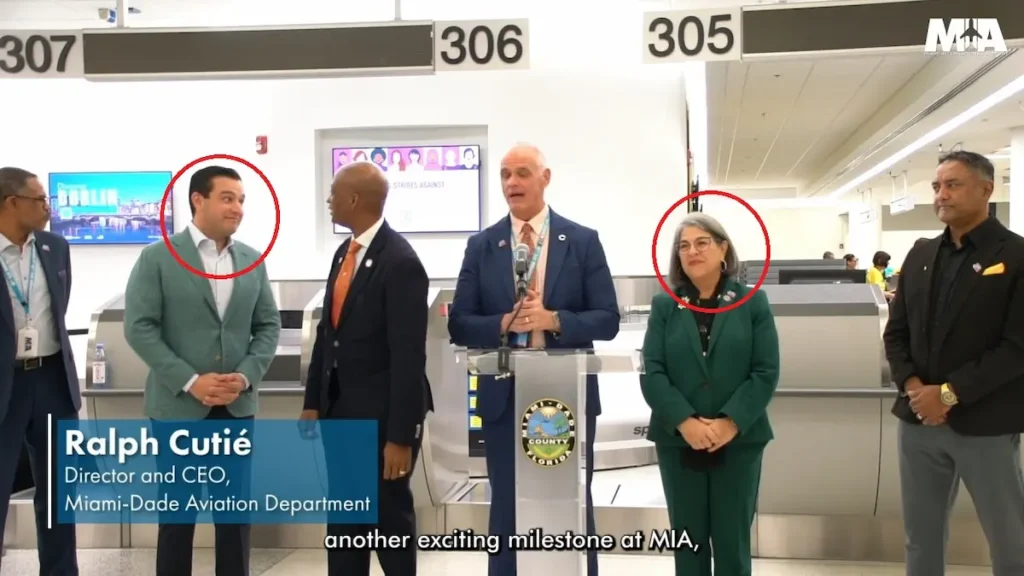

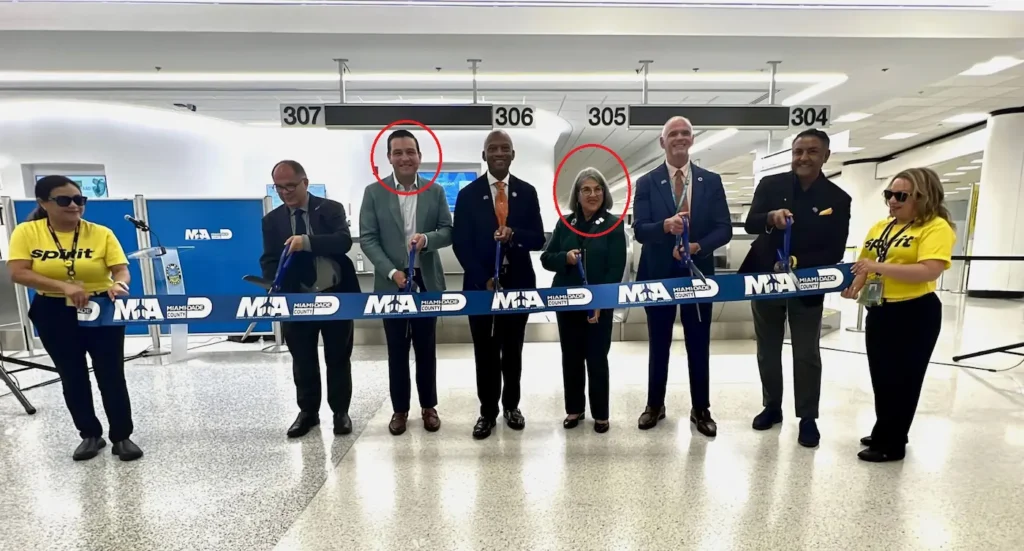
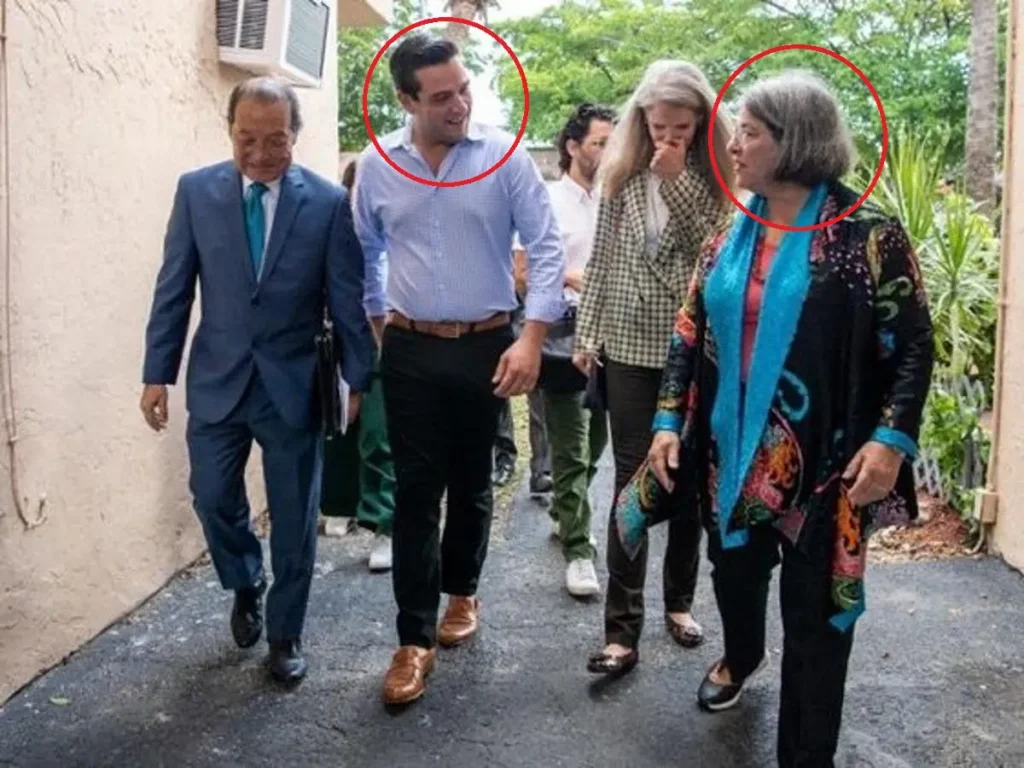
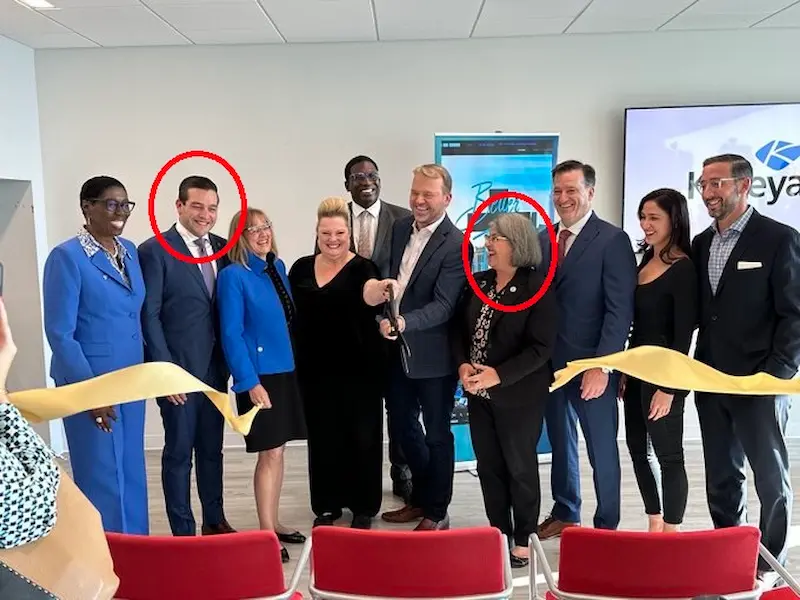
The Budget for the Old MIA: Is It Enough to Solve the Problems?
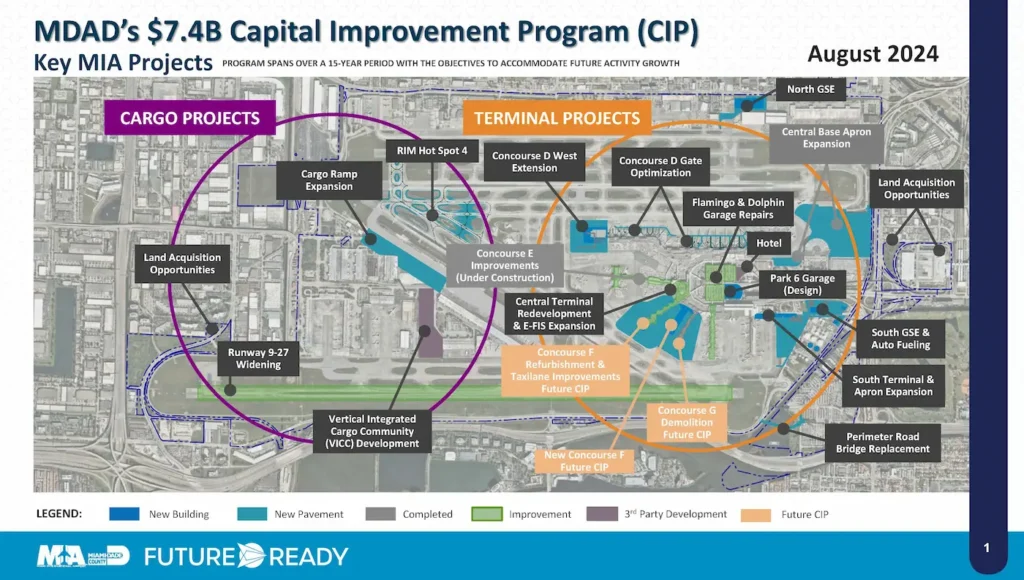
Under the Future Ready program, MIA’s renovation plan commits the county to a multi-billion-dollar budget totaling $9 billion. These investments aim to:
- Renovate public restrooms: 203 restrooms will be modernized in phases, with 141 scheduled for completion between 2025 and 2030, incorporating sustainable materials and energy-efficient fixtures.
- Replace passenger boarding bridges: 126 aging bridges are being replaced, prioritizing those over 30 years old.
- Build a new parking garage (Park 6): A seven-level garage with 2,240 spaces, including 50 for electric vehicles, is slated for completion by summer 2026.
- Construct a four-star hotel: The Westin Miami Airport Hotel will feature 451 rooms connected directly to Terminal D via a climate-controlled bridge, scheduled to open in late 2026.
- Enhance technology and operations: Annual investments of $12 million over the next 5–10 years aim to modernize MIA and position it as one of the world’s leading airports.
While these initiatives are necessary, the scope of the renovation reflects the accumulated cost of decades of neglect. This raises the question: Why wasn’t preventive maintenance prioritized to avoid reaching this critical point?
A New Airport: An Expensive Dream
Despite the ongoing renovation, county leaders are discussing the possibility of constructing a new airport to meet growing demands for passenger and cargo traffic. While visionary, this project lacks fundamental details:
- Estimated Cost: No official budget has been presented, but experts project that a new airport could exceed $15 billion, considering land acquisition, infrastructure, technology, and certifications.
- Funding Sources:
- Will the project be financed exclusively with public funds, or will private investment be involved?
- Will residents face new taxes or fees to cover these costs?
Comparing Land Prices and Priorities
Alongside these airport projects, the county has made significant land acquisitions:
- Land near MIA (25th Street):
- Area: 3.44 acres.
- Purchase Price: $17 million.
- Price per Acre: Approximately $4,941,860 per acre.
- Purpose: MIA expansion and demolition of existing structures.
- Land near Miami Executive Airport (TMB):
- Area: 57 acres.
- Purchase Price: $15.9 million.
- Price per Acre: Approximately $278,947 per acre.
- Purpose: Integration into the Runway Protection Zone and airport development.
Significant Disparity: The land near MIA costs 17 times more per acre than the land near TMB. While location may play a role in pricing, this stark difference warrants a detailed explanation.
Key Questions Raised by These Projects
Disparity in Land Prices:
Why is the county paying a disproportionate price for 3.44 acres near MIA compared to 57 acres near TMB?
Was a fair and competitive market evaluation conducted before these purchases were approved?
Funding Sources:
With a record-breaking $12.7 billion budget for 2024–2025, were these acquisitions accounted for? If not, where are the funds coming from?
How does the county plan to finance a new airport while investing $12 million annually in MIA renovations?
Impact on Other Priorities:
How do these investments affect funding for basic needs, such as expanding sewer services to neighborhoods that have lacked them since 1926?
Why are mega-projects being prioritized while the county faces critical issues with roads, flooding, and public sanitation?
Transparency:
What oversight mechanisms have been implemented to ensure that these purchases and investments are carried out in the best interest of the residents?
- Have the justifications for these acquisitions and the costs to taxpayers been clearly communicated?
Reports should include significant achievements and progress that demonstrate the positive impact of the projects.
Despite MIA’s international recognition for its cargo management and passenger traffic, these achievements have not been consistently reflected in the reports, leaving an incomplete picture.
Impact of Noncompliance on Public Trust
The lack of critical information in reports leads to erosion of public trust, as it limits the ability of citizens and stakeholders to evaluate:
- The efficient use of public resources.
- The actual progress of strategic projects.
- The direct impact of investments on residents’ quality of life.
Moreover, this lack of transparency raises concerns about the possibility of opaque or uncoordinated management of public funds, especially in multi-million-dollar projects like MIA’s renovations and recent land acquisitions.
Recommendations to Comply with Ordinance No. 19-122
To restore public trust and meet the transparency standards established by the ordinance, it is essential for the county government to:
- Incorporate Detailed Execution Indicators
- All reports should break down budget execution and physical progress at each project stage, meeting the required percentages (30%, 60%, 90%).
- Establish a Real-Time Monitoring System
- Implement digital tools to enable continuous project tracking and public access to updated information.
- Include Consistent Achievements and Projections
- Ensure that each report highlights both completed milestones and future goals, offering a comprehensive view of progress.
- Enhance Transparency in Grants
- Provide monthly details on grants received, allocated amounts, and how these funds are being utilized for specific projects.
Transparency as a Priority
Compliance with Ordinance No. 19-122 is not only a legal obligation but an ethical commitment to Miami-Dade residents. The lack of critical information in the reports not only limits transparency but also calls into question the government’s ability to manage public resources efficiently and equitably.
Immediate measures must be taken to address these deficiencies, ensuring that accountability becomes the rule rather than the exception.
A Questionable Relationship Between Costs and Priorities
While the county allocates millions to renovate an existing airport and dreams of building a new one, the disparities in costs and the lack of clarity in financial priorities raise legitimate concerns:
- Is this the best use of public funds?
- How are these cost disparities for land purchases and investment priorities justified?
- What impact will these decisions have on residents, who already face rising taxes and an unequal distribution of resources?
Without clear answers, these actions could further erode public confidence in the county government’s ability to manage resources efficiently and equitably.
The New Airport: An Expensive Dream
Despite the ongoing renovation, county leaders have begun discussing the construction of a new airport to meet growing demands for passenger and cargo traffic. This project, while visionary, lacks essential details:
- Estimated Cost: No official budget has been presented, but experts estimate that a new airport could exceed $15 billion, accounting for land, infrastructure, technology, and necessary certifications.
- Funding Sources:
- Will it be financed solely with public funds or include private investment?
- Will new taxes or fees be imposed on residents to cover these costs?

Impact on Residents: A Dream at the Expense of the Community?
The county budget for 2024–2025 already stands at $12.7 billion, the highest in its history. This amount is already stretched to address critical demands:
- Neighborhoods lacking basic sewer services since 1926, a pressing sanitary and environmental issue.
- Deficient infrastructure, with streets full of potholes and recurrent flooding.
- Postponed community and cultural projects, such as the development of public art.
How can the county justify building a new airport when these basic needs remain unresolved?
An Old Airport, a New Airport, and the Cost of Ambition
With $9 billion already allocated for MIA’s renovation, key questions arise:
- What guarantees that the current issues at MIA won’t be repeated at the new airport? If MIA fell into critical disrepair, what ensures a second airport won’t suffer the same fate without proper management?
- Is it sustainable for residents to finance two airports? The costs of construction, operation, and maintenance for a new airport could fall heavily on taxpayers, who are already grappling with significant property tax increases.
- How will the new airport affect future budgets? With a record-breaking budget already in place, where will additional funds come from for a project that could exceed $15 billion?
Conclusion: Priorities and Transparency
The proposal for a new airport in Miami-Dade, while MIA undergoes a costly renovation, raises serious questions about the county government’s ability to prioritize and manage public resources effectively.
- Are these grand ambitions sustainable for the county’s residents?
- Why not focus on the complete modernization of MIA before venturing into building a new airport?
- How will the county ensure that these decisions are made with the transparency and financial analysis necessary to protect taxpayers?
Without a clear financial plan and a commitment to transparency, these initiatives risk becoming a heavy economic burden for future generations. Miami-Dade must find a balance between its global ambitions and the urgent needs of its local community.
Want more post like this?
Head over to our homepage for the latest updates from South Florida and beyond:











